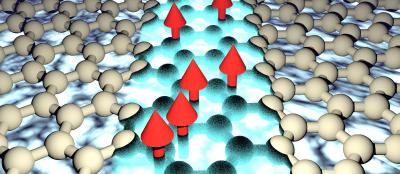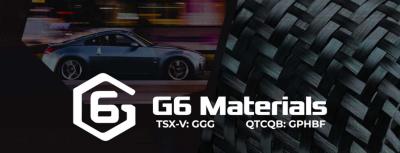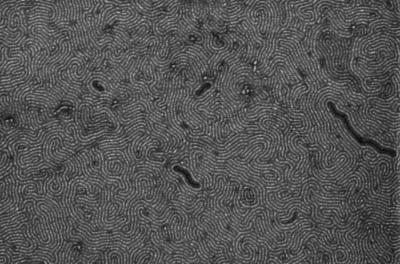The Graphene-Info weekly newsletter
Published: Tue, 05/04/21
The Graphene Flagship launches GrEEnBat project to improve battery technology for electric vehicles
The Graphene Flagship's new Graphene Enabled High-Energy Batteries for Automotive Applications (GrEEnBat) Spearhead project will aim to improve battery technology for electric vehicles.
The output of the strategic three-year project will be an automotive battery module prototype that is composed of 60 to 90 battery electric vehicle (BEV) cells. The core of innovation will be the negative electrode of the cell, composed of a silicon-graphene composite developed during earlier Graphene Flagship research projects.
Duke team creates fully recyclable printed electronics
Researchers at Duke University have created transistors with three carbon-based inks. The all-carbon thin-film transistors were made using crystalline nanocellulose as a dielectric, carbon nanotubes as a semiconductor, graphene as a conductor and paper as a substrate. This type of component could assist in addressing the environmental problem of accumulation of electronics that are non-recyclable.
“Silicon-based computer components are probably never going away and we don’t expect easily recyclable electronics like ours to replace the technology and devices that are already widely used,” said Professor Aaron Franklin, an electrical engineer at Duke University. “But we hope that by creating new, fully recyclable, easily printed electronics and showing what they can do, that they might become widely used in future applications.”
Researchers take a step towards achieving topological qubits in graphene
Researchers from Spain, Finland and France have demonstrated that magnetism and superconductivity can coexist in graphene, opening a path towards graphene-based topological qubits.
 Schematic illustration of the interplay of magnetism and superconductivity in a graphene grain boundary, a potential building block for carbon-based topological qubits Credit: Jose Lado/Aalto University
Schematic illustration of the interplay of magnetism and superconductivity in a graphene grain boundary, a potential building block for carbon-based topological qubits Credit: Jose Lado/Aalto University
In the quantum realm, electrons can behave in interesting ways. Magnetism is one of these behaviors that can be seen in everyday life, as is the rarer phenomena of superconductivity. Intriguingly, these two behaviors are often antagonists - the existence of one of them often destroys the other. However, if these two opposite quantum states are forced to coexist artificially, an elusive state called a topological superconductor appears, which is useful for researchers trying to make topological qubits.
G6 Materials reported its financial results for Q1 2021
G6 Materials (Formerly called Graphene 3D Lab) announced its financial results for Q1 2021, with revenues of $263,425 CAD and a net loss of $321,152.
Looking back at the last nine-month period (ended February 28, 2021), G6's revenues were $1.94 million CAD, up 276% from $515,930 in the prior year. The increase in revenues was attributed to consulting services provided to third-party clients, the ongoing sale of the Company’s air purification products and the receipt of a one-time payment as per the terms of a license and option agreement.
Viritech's future hydrogen-powered hypercar to use “graphene-reinforced hydrogen pressure vessels”
A British engineering company called Viritech is working on an ambitious hydrogen-powered hypercar. Dubbed the Apricale, it is being designed primarily as a technical showcase for the company’s hydrogen fuel-cell technology and aims to demonstrate the advantages of hydrogen vehicles over electric powertrains. The hypercar will be sold in limited numbers for around £1.5 million (~$2 million).

In order to lower the weight of the Apricale’s hardware, it features graphene-reinforced hydrogen pressure vessels. It was explained that the hydrogen storage tanks form part of the structure of the chassis to reduce weight and cost.
Graphene oxide gives a boost to new intranasal flu vaccine
Researchers at Georgia State University and Emory University have developed an intranasal influenza vaccine using recombinant hemagglutinin (HA), a protein found on the surface of influenza viruses, as the antigen component of the vaccine.
They also created a two-dimensional nanomaterial (polyethyleneimine-functionalized graphene oxide nanoparticles) and found that it displayed potent adjuvant (immunoenhancing) effects on influenza vaccines delivered intranasally.
New method to produce graphene nanoribbons could promote use in telecommunications applications
University of Wisconsin–Madison researchers have fabricated graphene into the smallest ribbon structures to date, using a method that is said to make scaling-up simple. In tests with these tiny ribbons, the scientists discovered they were closing in on the properties they needed to move graphene toward usefulness in telecommunications equipment.
 Image credit: University of Wisconsin−Madison
Image credit: University of Wisconsin−Madison
“Previous research suggested that to be viable for telecommunication technologies, graphene would need to be structured prohibitively small over large areas, (which is) a fabrication nightmare,” says Joel Siegel, a UW–Madison graduate student in physics professor Victor Brar’s group and co-lead author of the study. “In our study, we created a scalable fabrication technique to make the smallest graphene ribbon structures yet and found that with modest further reductions in ribbon width, we can start getting to telecommunications range.”
Tirupati Graphite develops 'ground-breaking' graphene-aluminium (Al-Gr) composite
Tirupati Graphite has announced that its research center has developed a 'ground-breaking' graphene-aluminium (Al-Gr) composite, which reportedly exhibits significantly higher conductivity and strength properties over aluminium and could be used as a substitute for copper.
The specialist graphite and graphene producer said it was engaged with potential end users including a FTSE100 company for the composite’s potential use replacing copper in thermal, power and propulsion systems, providing significant environmental advantages owing to reduced weight.




